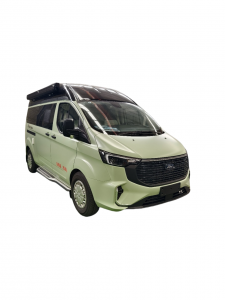Introduction:
Work trucks have been an essential part of various industries for centuries, providing a means of transporting goods, equipment, and materials efficiently. From humble beginnings as horse-drawn wagons to the advanced utility vehicles of today, work trucks have evolved significantly to meet the ever-changing demands of modern businesses. In this article, we will explore the rich history, diverse types, and technological advancements of work trucks, highlighting their crucial role in driving economic growth and productivity.
1. The Origins of Work Trucks:
The history of work trucks can be traced back to ancient civilizations, where rudimentary carts and wagons were used for transporting goods and materials. However, it was during the Industrial Revolution in the 18th and 19th centuries that work trucks began to take on a more sophisticated form. The invention of the steam engine and the introduction of railways revolutionized transportation, leading to the development of specialized work vehicles for various industries.
2. The Rise of Horse-Drawn Wagons:
Before the advent of motorized vehicles, horse-drawn wagons were the primary mode of transportation for goods and materials. These sturdy wagons were essential for industries such as agriculture, mining, and construction, providing a reliable means of moving heavy loads over long distances. The iconic image of a horse pulling a wagon became synonymous with hard work and perseverance, symbolizing the backbone of early industrial economies.
3. The Transition to Motorized Vehicles:
The early 20th century saw the emergence of motorized work trucks, marking a significant shift in the transportation industry. The invention of the internal combustion engine and the mass production of automobiles by companies like Ford and Chevrolet paved the way for the widespread adoption of trucks for commercial purposes. These early trucks were rugged and utilitarian, designed to withstand the rigors of industrial work environments.
4. Types of Work Trucks:

Work trucks come in a variety of shapes and sizes, each tailored to specific industry needs and applications. Some common types of work trucks include:
- Pickup Trucks: Versatile and popular, pickup trucks are widely used in industries such as construction, landscaping, and agriculture. With their open beds and towing capabilities, pickup trucks can transport equipment, tools, and materials with ease.
- Flatbed Trucks: Flatbed trucks feature a flat, open bed that allows for easy loading and unloading of oversized or bulky items. These trucks are commonly used in construction, freight transportation, and moving industries.
- Dump Trucks: Designed for hauling loose materials such as dirt, gravel, and construction debris, dump trucks feature hydraulic mechanisms that allow the bed to be raised and emptied at the desired location. These trucks are essential for construction and infrastructure projects.
- Box Trucks: Also known as cube vans or straight trucks, box trucks have an enclosed cargo area that provides protection for goods during transportation. These trucks are commonly used for deliveries, moving services, and logistics operations.
- Utility Trucks: Utility trucks are specialized vehicles equipped with tools and equipment for performing maintenance, repair, and installation tasks. These trucks are essential for industries such as telecommunications, utilities, and municipal services.
5. Technological Advancements in Work Trucks:
Modern work trucks have undergone significant technological advancements to enhance performance, efficiency, and safety. Some notable innovations in work truck technology include:
- Advanced Telematics: Telematics systems allow fleet managers to monitor vehicle performance, track location, and optimize routes in real-time. These systems help improve fuel efficiency, reduce maintenance costs, and enhance overall fleet productivity.
- Automated Features: Many modern work trucks are equipped with automated features such as collision detection, lane departure warning, and adaptive cruise control. These technologies help prevent accidents, improve driver safety, and reduce the risk of costly repairs.
- Alternative Fuel Options: With a growing focus on sustainability and environmental conservation, many work trucks now offer alternative fuel options such as electric, hybrid, and natural gas. These eco-friendly alternatives help reduce emissions and lower operating costs over time.
- Integrated Work Solutions: Work trucks are increasingly being integrated with specialized equipment and tools to streamline operations and increase efficiency. Features such as onboard cranes, lift gates, and storage compartments enhance the versatility and functionality of work trucks in various industries.
6. https://www.worktruckmaker.com/how-to-choose-the-right-boom-truck-for-your-project/ of Work Trucks:
As technology continues to evolve and industries become more interconnected, the future of work trucks holds promising opportunities for innovation and growth. Advancements in autonomous driving, electric propulsion, and connectivity are expected to reshape the work truck industry, making vehicles smarter, safer, and more sustainable.
Conclusion:
Work trucks have come a long way from their humble origins as horse-drawn wagons, evolving into sophisticated utility vehicles that power modern industries. With a rich history, diverse types, and technological advancements, work trucks continue to play a vital role in driving economic growth and productivity around the world. As we look towards the future, the evolution of work trucks promises exciting possibilities for innovation and efficiency, ensuring that these essential vehicles remain at the forefront of industrial progress.
